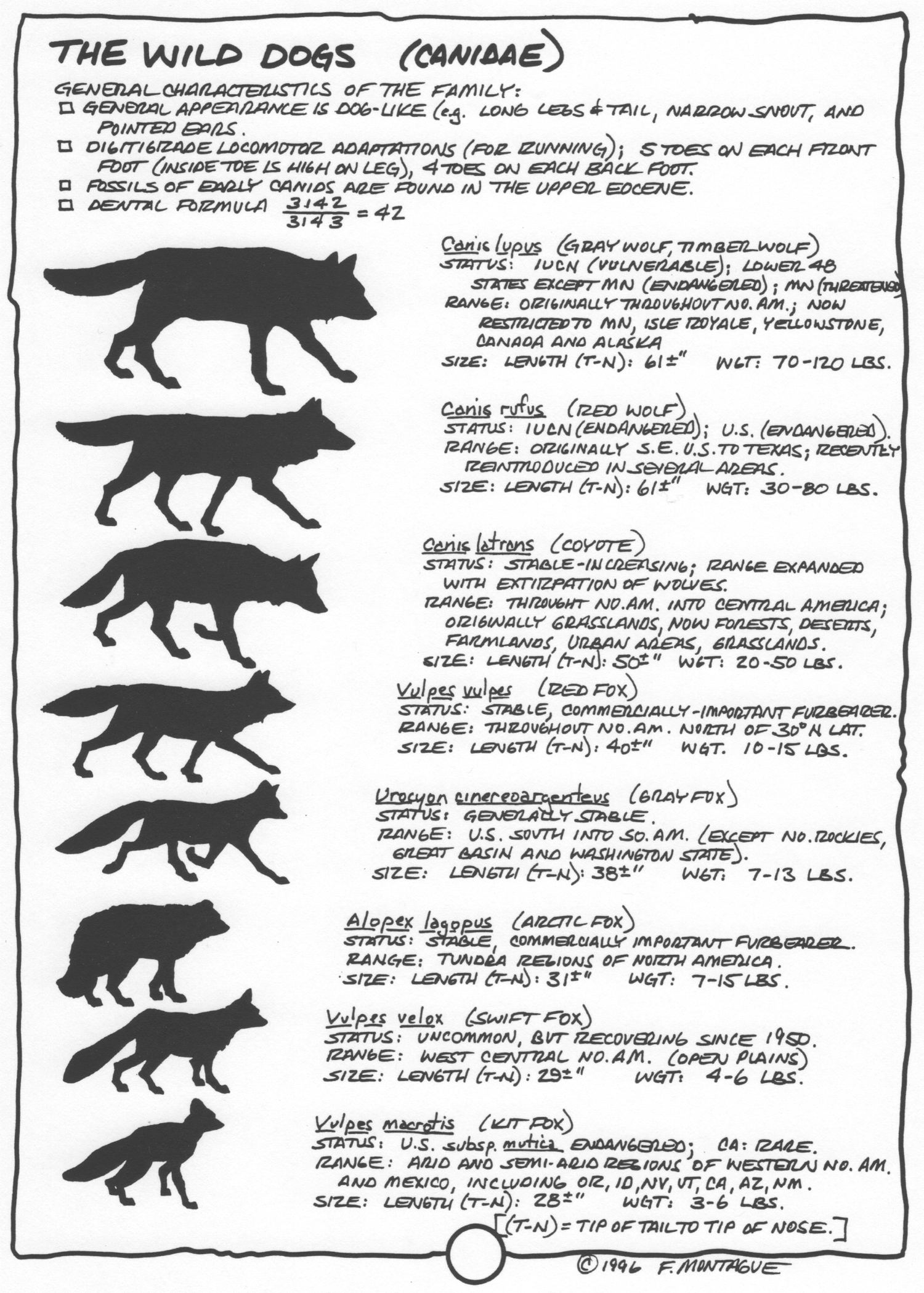This page from my wildlife textbook Wa-Maka-Skan depicts the dental patterns and tooth structures for three families of North American mammals. The beaver represents the Family Castoridae, of which it is the only member. The family Castoridae is among other families included in the Order Rodentia (the Rodents). The rodents include mice, squirrels, muskrats, chipmunks, rats, and other gnawing animals. The coyote skull is typical of all of the wild dogs (Family Canidae). And the white-tailed deer skill shows the teeth characteristic of all of the members of the Deer Falmily (Cervidae), except the elk which have two upper canine teeth.
An animal's teeth, among other adaptations, reveal its place in the ecological community. There are many habitats in North America, and every habitat has many niches. The types of teeth indicate the animal's food habits and methods of acquiring the materials and energy to live and reproduce.
The beaver gnaws on willows, aspens, and other stream-side trees to feed on the living tissue of the inner bark. The white-tailed deer, a browser, typically feeds on the edible portions of trees and shrubs, grinding the plant tissues into fine pieces to nourish the microbes in its rumen. The deer then digests the microbial products. The coyote's teeth are adapted to killing other animals (mice, rats, rabbits, etc.) and shearing them into pieces to be swallowed.
These are just three example from three families of mammals. There is great diversity in the natural world, and many more species and families to learn from.



